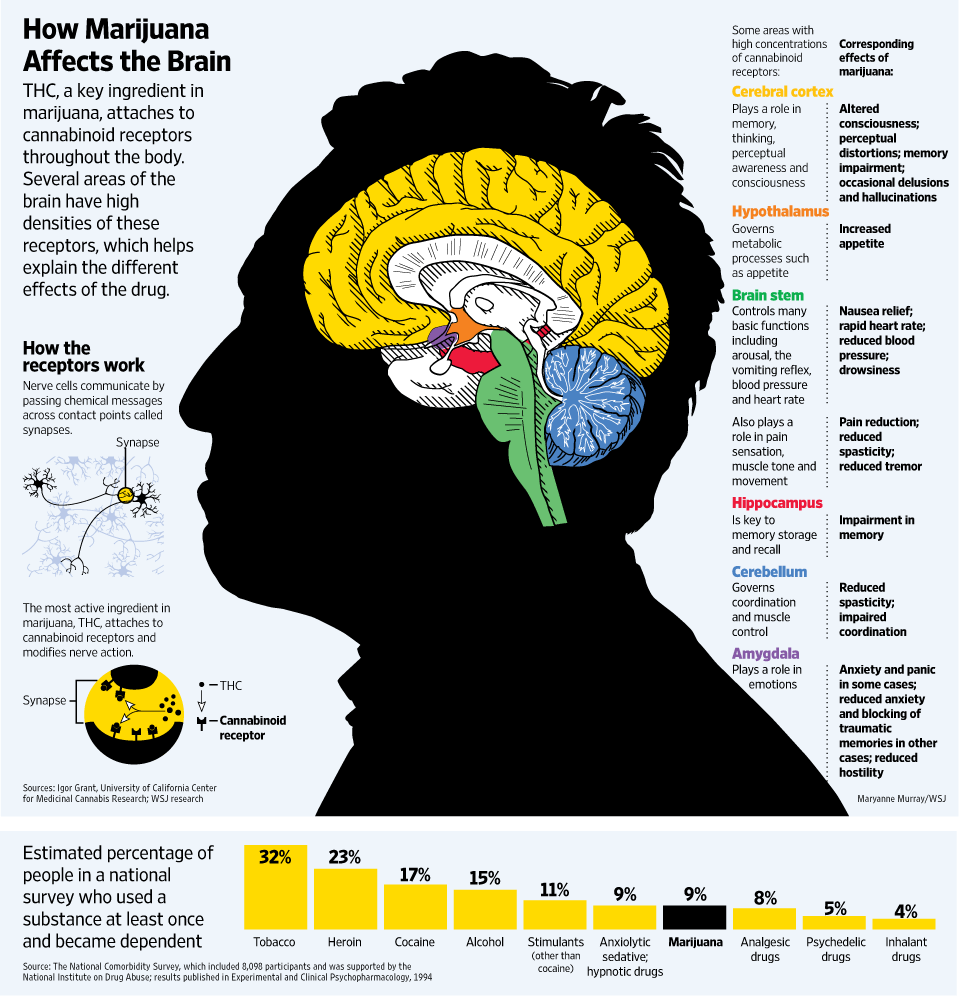Everyone in the United States seems to have this stereotypically view of marijuana. When we hear about it, we think of all the pop culture references from music by rap singers, TV shows like Weeds, and movies like Pineapple Express, but what we don’t think about is why it was used in the first place.
The use of marijuana for medicinal purposes predates recorded history, and the earliest record of its use for medicine was in 1500 BC by the Chinese. Even in today’s society marijuana can be prescribed for treatment of chronic pain, seizures, muscle spasms causes by MS, nausea caused by chemotherapy, poor appetite, glaucoma, cluster headaches, the list goes on.
And the reason it works? THC (tetrahydrocannabinol)

Our response to marijuana is based on the fact that our body produces molecules called endocannabinoids, which are structurally similar to THC. The two main endocannabinoids we produce are called Anandamide (AEA) and 2-arachidonoylgylcerol (2-AG). After these molecues are synthesized, they enter the extracellular space and bind to CB1 and CB2 (cannabinoid) receptors initiating the response. THC acts on these receptors in the same way. After the activation of these receptors a number of pathways are turned on or altered, many of which affect signal transduction in the brain, and of course the common side affect of marijuana, appetite.
Unfortunately, THC does have some downfalls, like it’s psychotropic effects, which contribute to marijuana’s addictive qualities. However, researchers are looking for ways to synthesize an alternative to THC, because of its numerous benefits.
A potential alternative, could alleviate some of the social consequences of using and prescribing medicinal marijuana, but it is important to think about the pharmacological characteristics of taking THC in the form of marijuana.
Marijuana can be taken as a liquid extract, eaten, vaporized, or the most common, smoked. Now, smoking marijuana has its benefits over the others, because in this form THC enters the body the most rapidly. Pharmacologically this is important because the therapeutic qualities become apparent much more quickly. For example, if one feels a cluster headache coming on, and they use their medicinal marijuana, they can essentially stop the headache before it starts. Whereas, if they were using a THC alternative in the form of a pill, the results may not be quick enough to provide the best therapy.
So, before you pick a side of the legalization of medicinal marijuana, really look at the benefits that were listed here, and weigh the very few consequences, because they are greatly outweighed by the therapeutic properties that THC provides.